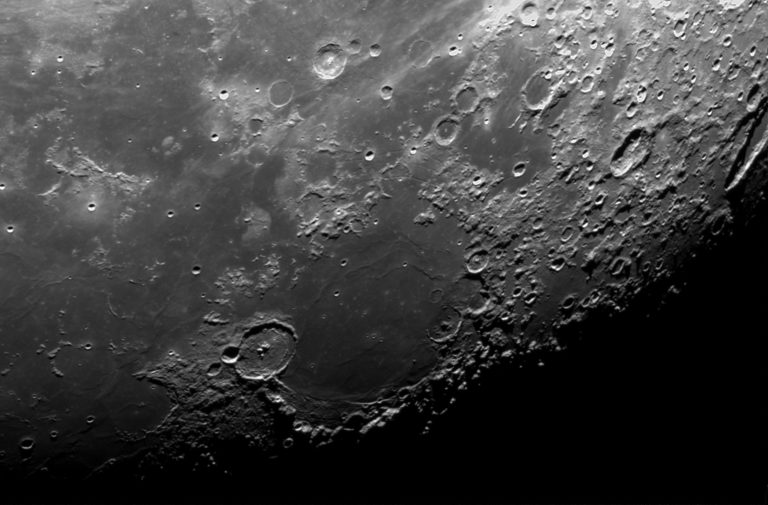3C273 3C273 Annotated Not the most exciting of images but significant for what is actually shown here. Just looking at the photo on the above left, you’d be forgiven for thinking this was just an image of a star field, a boring one at that. However, this is a picture of the Quasar 3C273 in Virgo, one of the most distant objects possible for an amateur astronomer with instruments available to the average amateur to see. Light left this object two billion years ago! 3C273 is the 273rd object in the Third Cambridge University catalogue of radio objects. It was discovered as an extremely bright source of radio waves long before it was identified visually. It was the first ever quasar to be discovered in 1959. It represents an extremely active core of a very distant galaxy, so distant that we only see the core and not the outer parts…
M45 – The Pleiades An image of the Pleiades taken with a Samyang 135mm lens and Astrodon RGB filters. Field of view is approximately 6×4 degrees. Taken 18 November 2019 and 10 x 180s exposures in each filter. M45 annotated version
This is the Virgo Cluster of galaxies presented in a wide field setting. The cluster is a popular area for amateur astronomers and professionals alike and contains some very important galaxies, the most important of which is M87, the supergiant elliptical galaxy and one of the largest galaxies in the local universe. You can see Markarian’s Chain demonstrated at an unfamiliar angle in this picture. The picture is comprised from data captured during late March 2020 and I used my Samyang 135mm DSLR lens connected to G2-8300 cooled CCD camera from Moravian Instruments and Astrodon RGB filters. The picture is comprised of 70 minutes (of five minute exposures binned 1×1) in each of the red, green and blue filters to give a total integration time of three hours and thirty minutes. The data was developed with PixInsight and Photoshop. The Virgo Galaxy Cluster The Virgo Galaxy Cluster Inverted The Virgo…
The Leo Triplet is a popular trio of galaxies in the constellation of Leo, popular with amateur and professional astronomers alike. They are visible in the late winter and spring in the Northern Hemisphere. Consisting of M65, M66 and NGC 3628, the galaxies are about 35 million light years away. NGC 3628 was never given the distinction of as Messier number for some reason, even though it is as bright as the other two members. The image was taken with my Samyang 135mm DLSR lens coupled with Moravian G2-8300 cooled CCD camera with Astrodon RGB filters. It consists of seventy minutes (5 minute exposures binned 1×1) in each of the red, green and blue filters to give a total integration time of three hours and thirty minutes. The triplet was about 45 degrees above the horizon when the exposures were captured. IT was then processed with Pixinsight and Photoshop. The…
A few pictures of the moon that I took with my Meade 14 ACF SCT scope with a ASI 174MM camera in January 2020. The pictures utilised no filters at all. Copernicus Area Apollo 11 Area Plato Region Mare Humurum Region The Meade 14″ is an astounding scope that I liked very much. However, with a heavy heart I subsequently went on to sell this telescope since I felt that in my Bortle 5skies it doesn’t offer any significant advantage over and above the Celestron C925; the latter scope being very much more manageable that the huge (and very heavy) 14″ Meade. At some point in the future I may regret this decision since the scope excelled on the few occasions I took it to truly dark skies. However, I could not let my heart rule my head and I decided to sell it.





